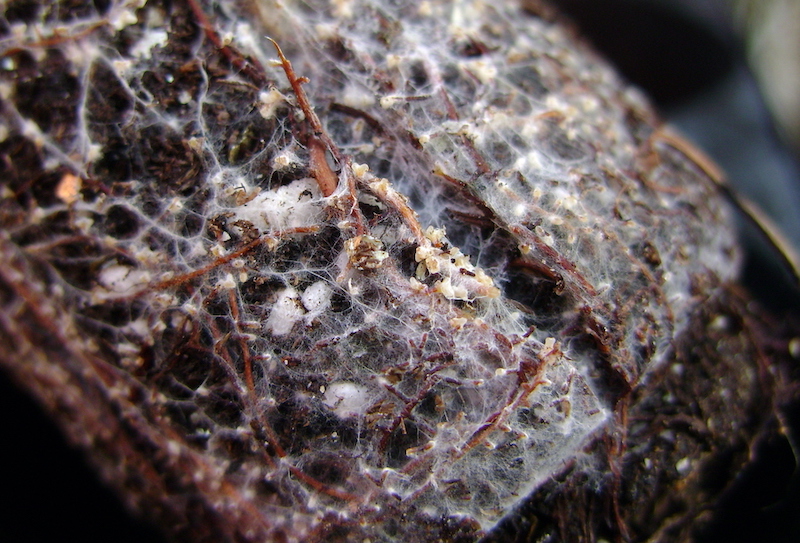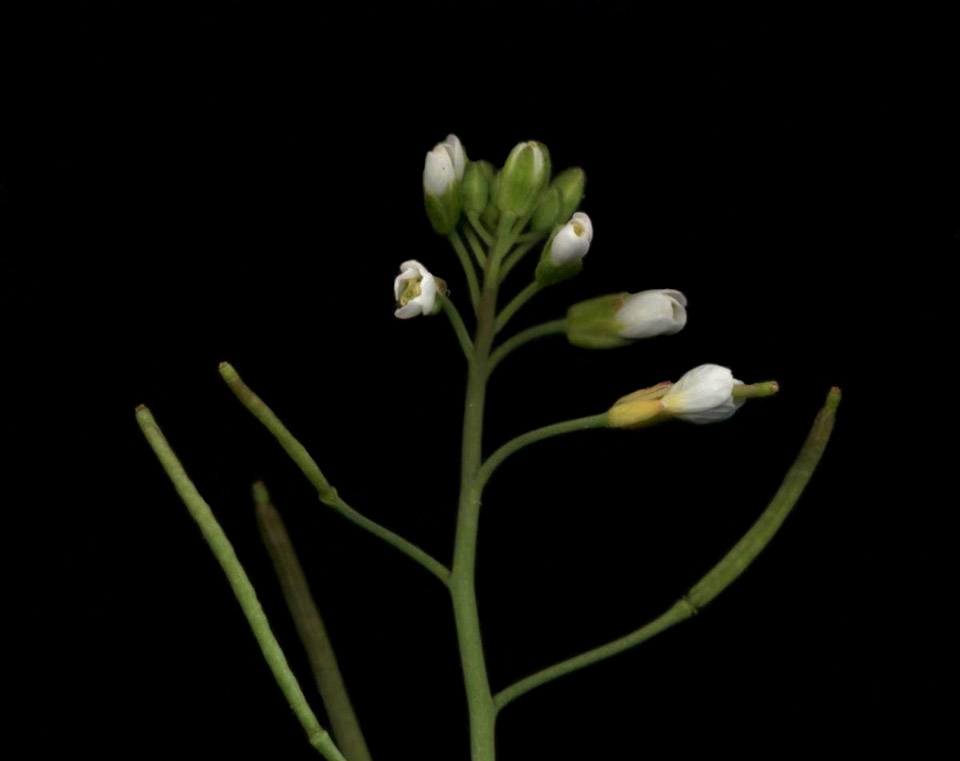The curious language of plants

Communication between plants is largely unknown to most people. However, plants communicate using different systems. In this article, we will talk about all the different methods used by plants to communicate between them and why is it key to their survival.
Plants are considered one of the most lonely and harmless living organisms just because they provide oxygen and food to the rest of the living beings. Furthermore, it is believed they don’t have any kind of interaction, nor between them nor with their environment, except for the pollinator insects and predatory species. Nevertheless, this is not exactly true. Plants are part of complex communities and, inside these communities, they communicate in order to survive, defend themselves or guarantee a series of resources to benefit their growth. As a way to compensate for a life fixed to the soil and the lack of specialised organs, plants have acquired by natural selection different communication systems based on positive allelopathy. In other words, they have developed mechanisms to produce biochemical compounds that can influence other neighbouring organisms’ survival, growth or reproduction, allowing them to overcome adversity.
Communication is defined as an exchanging process between two or more participants in order to deliver a message. The sender of this information has the ability to code the message and send it to a recipient who will decode it and will be able to produce a response. But, unlike humans, when we talk about communication in the world of plants, we are talking about a minimum information exchange: plants share information, but the recipient will never actually reply. Therefore, it could be said that they can’t establish proper conversations, but instead the sender will send a message regardless of the consequences it may have on the recipients.
This may be the reason why, whenever we talk about plants, many authors agree this is not exactly an altruist act of communication between plants, but an act of espionage to seize the opportunity to adapt and protect themselves against future attacks.
Messages are in the air
Plants are able to communicate in different ways and by diverse means. In any act of communication, the message sent must be coded in a language understandable to the receiver. When it comes to plants, this language consists of molecules called volatile organic compounds (VOC). These molecules are secondary metabolites synthesised by the plants for their physiological functioning and are stored in cellular reservoirs. When the plant is under some kind of attack, these metabolites will be released into the air and will travel to meet neighbouring plants, thus creating a communication between them.

There are many types of VOC that differ in composition and structure. This great variety is due to the fact that VOCs are released for certain types of lesions, and also because certain species of plants synthesise unique VOCs, which means that not all plant species have the right receptors to be able to receive and understand all the different VOCs.
To sum up, we can say VOCs are the words of plants. Thus, some species have their own languages that only they could understand. As a consequence, there will be a situation of discrimination where the plant’s genetic kinship will benefit the communication between them, thus avoiding possible espionage by other species.
Underground communication
In the same way human beings have developed other ways of communicating apart from speech, plants can also communicate through the rhizosphere, the part of soil influenced by roots. This kind of communication, unlike aerial communication, uses biological intermediaries. And these are none other than fungi, the symbiont partners of plants. Symbiotic network of hyphae and roots. / André Picard – Wikimedia
Symbiotic network of hyphae and roots. / André Picard – Wikimedia
Fungi and plants form an underground symbiosis called mycorrhizal network, that is like the Internet for plants because it can connect all the plants of a forest, reaching distances measurable in square kilometres. As a consequence, thanks to this phenomena, different plants recognize and sense each other through the transport of signals and compounds between the roots and hyphae. Therefore, these compounds act as neurotransmitters that move across the “synapses” between the cell walls of plant roots and fungal hyphae.
Murmuring
Even though plants don’t have specialised organs to produce sound, some theories say plants have developed alternative systems to communicate between them. If we consider sound waves to be caused by vibrations, and eukaryotic plant cells vibrate due to the movement of transport proteins, the fact is that, given the large number of cells found in a plant, these sound waves can be amplified to emit frequencies of about 150-200 KHz. But these frequencies will never be audible for the human ear.
 It would be necessary to amplify the sound to be able to hear the frequencies at which the plants emit sounds.
It would be necessary to amplify the sound to be able to hear the frequencies at which the plants emit sounds.
In that sense, it has been proven that plants answer to some specific sound waves and these affect seed germination rates and the plant’s growth. Therefore, plants could be considered to have listening mechanisms and, as a consequence, there is the possibility that there might be some communication through the sound waves emitted by other plants, waves that can somehow influence the recipients. However, there is currently not enough information for more specific conclusions about this behaviour.
The need to communicate
As we have said before, plants can be considered one of the organisms that need to communicate the most to compensate for a life fixed to the soil. Because of this, they are exposed and defenceless in different dangerous situations, caused by pathogens, herbivorous species or extreme conditions or because of the competition against other plants for available resources. These are the reasons why, the most commonly shared information among plants is related to diseases or insects that may attack them, being these the most common dangers to which they are subjected.
 When the plant is threatened, it activates its defence and communication mechanisms.
When the plant is threatened, it activates its defence and communication mechanisms.
Whenever the plant is damaged, it would create a response to stimulate the expression of defence related genes. This response can be synthesising products that are toxic to herbivores or synthesising new structural components to fix the damaged parts, all with the main goal of protecting themselves.
As we have said before in this article, plants can also communicate by releasing different VOC that will travel to other nearby plants. Thanks to this kind of communication, the recipients of the message can be prepared for an attack. But how? Responses may translate differently depending on what plants are the recipients. One of the responses will be to amplify the response by releasing more volatile compounds to warn other plants. This is how they create a domino effect and the whole community will be aware and ready to face the threat.

However, if the defence is not strong enough, plants have developed something that may be considered as a “secret weapon”. It is none other than the use of certain VOC to attract other organisms, such as carnivore predators or parasites, to protect the plant against menacing herbivores.
Once we’ve seen plants respond to a threatening situation, we can have some doubts. One of them would be why a plant would use all its resources to warn other plants while it is under attack? Actually, plants produce these chemical compounds for themselves, solely to prepare the parts of their structure that have not been damaged yet for the attack. Their intention was never to warn other plants. Neighbouring plants just take advantage of the situation when they receive the unintended chemical compound released by the first plant.
 Plants live in constant rivalry.
Plants live in constant rivalry.
But, even though plants need to protect themselves from different predators, they are not the only threat. Plants also have to fight against other plants for all the different natural resources. This fight takes place underground and roots are the main fighter, since plant growth itself will be linked, among other factors, to the plant’s capacity to obtain resources from the soil. In this case, the function of the root will be to synthesise VOC and release them into the rhizosphere to explore the area and detect the presence of neighbouring plants, only to avoid or face rival roots.
In short, we can conclude that plants are not the inert and isolated beings that we may sometimes think they are. On the contrary, they are capable of performing different communicative functions, such as interacting with the surrounding organisms, learning to defend themselves from predators, communicate and exchange information and nutrients through networks, as well as competing for their survival. A plant communication environment where there are still many things to discover.
Bibliografia
Bais, H. P., Park, S. W., Weir, T. L., Callaway, R. M., & Vivanco, J. M. (2004, January 1). How plants communicate using the underground information superhighway. Trends in Plant Science, Vol. 9, pp. 26–32. https://doi.org/10.1016/j.tplants.2003.11.008
Baldwin, I. T., Kessler, A., & Halitschke, R. (2002). Volatile signaling in plant–plant–herbivore interactions: what is real? Current Opinion in Plant Biology, 5(4), 351–354. https://doi.org/10.1016/S1369-5266(02)00263-7
Dixit, S., Shukla, A., Upadhyay, S. K., & Verma, P. C. (2019). Mode of Communication Between Plants During Environmental Stress BT - Molecular Approaches in Plant Biology and Environmental Challenges (S. P. Singh, S. K. Upadhyay, A. Pandey, & S. Kumar, eds.). https://doi.org/10.1007/978-981-15-0690-1_7
Estabrook, E. M., & Yoder, J. I. (1998). Plant-Plant Communications: Rhizosphere Signaling between Parasitic Angiosperms and Their Hosts. Plant Physiology, 116(1), 1 LP – 7. https://doi.org/10.1104/pp.116.1.1
Gagliano, M. (2012). Green symphonies: a call for studies on acoustic communication in plants. Behavioral Ecology, 24(4), 789–796. https://doi.org/10.1093/beheco/ars206
Heil, M., & Karban, R. (2010). Explaining evolution of plant communication by airborne signals. Trends in Ecology & Evolution, 25(3), 137–144. https://doi.org/10.1016/j.tree.2009.09.010
Ninkovic, V., Rensing, M., Dahlin, I., & Markovic, D. (2019). Who is my neighbor? Volatile cues in plant interactions. Plant Signaling & Behavior, 14(9), 1634993. https://doi.org/10.1080/15592324.2019.1634993
Simard, S. W. (2018). Mycorrhizal Networks Facilitate Tree Communication, Learning, and Memory BT - Memory and Learning in Plants (F. Baluska, M. Gagliano, & G. Witzany, Eds.). https://doi.org/10.1007/978-3-319-75596-0_10






